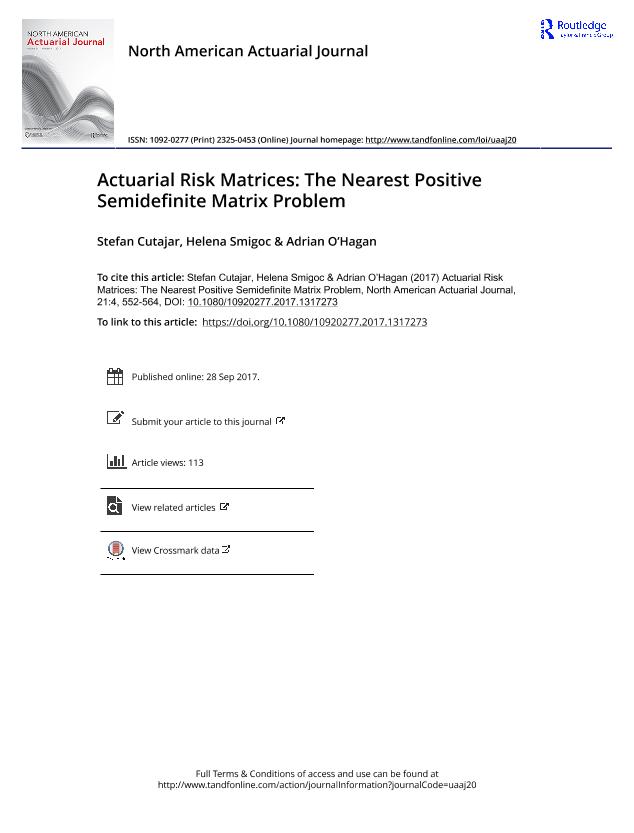Actuarial risk matrices : the nearest positive semidefinite matrix problem

Contenido multimedia no disponible por derechos de autor o por acceso restringido. Contacte con la institución para más información.
| Tag | 1 | 2 | Valor |
|---|---|---|---|
| LDR | 00000cab a2200000 4500 | ||
| 001 | MAP20180003967 | ||
| 003 | MAP | ||
| 005 | 20180213171040.0 | ||
| 008 | 180207e20171204esp|||p |0|||b|spa d | ||
| 040 | $aMAP$bspa$dMAP | ||
| 084 | $a6 | ||
| 100 | $0MAPA20180001291$aCutajar, Stefan | ||
| 245 | 1 | 0 | $aActuarial risk matrices$b: the nearest positive semidefinite matrix problem$cStefan Cutajar, Helena Smigoc, Adrian O'Hagan |
| 520 | $aThe manner in which a group of insurance risks are interrelated is commonly presented via a correlation matrix. Actuarial risk correlation matrices are often constructed using output from disparate modeling sources and can be subjectively adjusted, for example, increasing the estimated correlation between two risk sources to confer reserving prudence. Hence, while individual elements still obey the assumptions of correlation values, the overall matrix is often not mathematically valid (not positive semidefinite). This can prove problematic in using the matrix in statistical models. The first objective of this article is to review existing techniques that address the nearest positive semidefinite matrix problem in a very general setting. The chief approaches studied are Semidefinite Programming (SDP) and the Alternating Projections Method (APM). | ||
| 650 | 4 | $0MAPA20080602437$aMatemática del seguro | |
| 650 | 4 | $0MAPA20080579258$aCálculo actuarial | |
| 700 | 1 | $0MAPA20180001499$aSmigoc, Helena | |
| 700 | $0MAPA20170005438$aO'Hagan, Adrían | ||
| 773 | 0 | $wMAP20077000239$tNorth American actuarial journal$dSchaumburg : Society of Actuaries, 1997-$x1092-0277$g04/12/2017 Tomo 21 Número 4 - 2017 , p. 552-564 |

